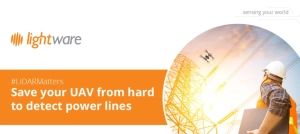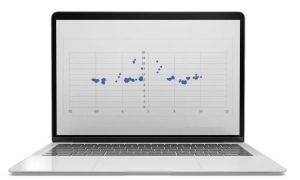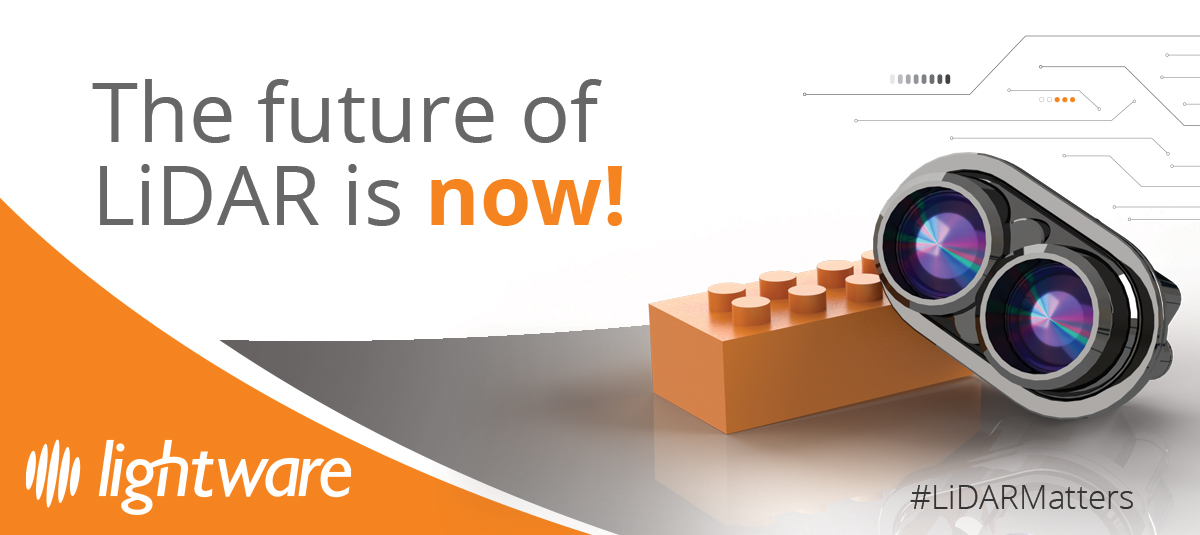Lightware Saves UAVs From Hard To Detect Power Lines
Written by Nadia Nilsen

“Drone lands on power lines resulting in a power outage for thousands” is certainly not the first or the last news headline of its kind. Overhead power lines pose a serious risk to UAV operations. These incidents could not only result in the loss of the drone and its payload but could also cause injury to people and animals and damage infrastructure and property. Retrieving the drone from high-voltage power lines is also a dangerous task. As a UAV operator, it’s crucial to avoid flying into these obstacles at all costs.
Power lines are notoriously difficult to detect. Distribution lines are relatively small, ranging from 0.2 inches (5mm) to 0.8 inches (20mm) in diameter, and are often black, brown, or gray in color. Against a complex and dynamic background, they are difficult to see even with perfect human vision. Moreover, power lines can vary in height depending on location and terrain, making their presence hard to predict. Low visibility or lighting conditions can exacerbate these challenges, making it even more difficult to detect overhead power lines from a distance or at high speed.
Power lines are not the only overhead lines that pose a risk to UAVs. Telecommunication lines, internet lines, bridge cables, train and trolley cables and overhead crane wires are just a few other examples. For UAVs to become truly autonomous in a complex world and unlock the full commercial potential of this technology, they need a reliable way to detect and avoid these everyday obstacles.
Stereoscopic cameras and computer vision have been woefully unsuccessful in solving this problem. Radar has limited resolution and may not be able to accurately detect small and thin power lines or identify the exact location of the power lines to avoid them. High-resolution radar systems can be expensive, and using them solely for detecting power lines may not be cost-effective. Ultrasonic sensors have a limited range, low resolution and can be negatively impacted by changing environmental factors like wind and temperature.
The best technology for detecting these burdensome hazards is LiDAR. With its small beam divergence, LiDAR can pinpoint the location of overhead lines to ensure they can be avoided. LiDAR is unaffected by low visibility or lighting conditions as it generates and pulses its own light source. LiDAR’s relatively long range allows for detection well ahead of a potential collision, even if the UAV is traveling at a high speed.
LightWare’s professional-grade microLiDAR® sensors offer all of these benefits in a small form factor with low power consumption at an affordable price point, making them ideal for integration onto drones. These sensors allow for wide adoption, especially in cases where multiple sensors are required to be installed per drone.
To detect overhead lines with a narrow LiDAR beam, the key factor is the update rate of the sensor. Imagine you are a fast-moving drone and need to detect a small obstacle with a narrow LiDAR beam. It may seem easy to miss, but with a high update rate scanning LiDAR, it’s nearly impossible to miss. Let’s look at some numbers: if you’re traveling at 60 mph (97 km/h) and pass under a power line with a vertically mounted LightWare SF30/D microLiDAR reading at 20kHZ, then the sensor will hit a passing 0.2 inch diameter line over 360 times and a 0.8 inch line over 1 400 times!
The ability to detect power lines not only ensures safe operations of UAVs, but also unlocks commercial opportunities such as fully autonomous power line inspections and other beyond visual line of sight (BVLOS) missions. Customers of LightWare are already using the SF40/C and SF45/B microLiDAR sensors to maintain a safe distance from and follow power lines while capturing high-resolution photos for later analysis.
Our team recently ran some tests to see how accurately the SF30/D and SF45/B microLiDAR® sensors detect overhead power lines. The experiment was conducted by holding the sensor outside the window of a moving vehicle pointed directly toward the open sky.
The results of this experiment showed that LighWare microLiDAR® sensors were not only detecting the main power lines but also picking up the static lines that run above them. These cables are used for lighting protection and are much thinner than the power lines. To no surprise, the SF30/D and SF45/B microLiDAR® sensors easily managed to detect all the power lines.

Data was logged using LightWare Studio. The objective was to detect the presence or absence of the overhead power lines using the SF30/D and the results show the bundles of power lines as well as the lightning cable that are a few meters above the bundles.

Data was logged using LightWare Studio. The next sensor for testing was the SF45/B, which was used for horizontal or vertical detection and avoidance. This test was to determine the type of readings one would receive from the SF45/B when scanning power lines.
As a global pioneer in LiDAR, LightWare has a proven track record of delivering technology that exceeds industry expectations.
Talk to LightWare’s technical support team to help you solve these and other challenges with LightWare microLiDAR sensors.
Find the original article here





